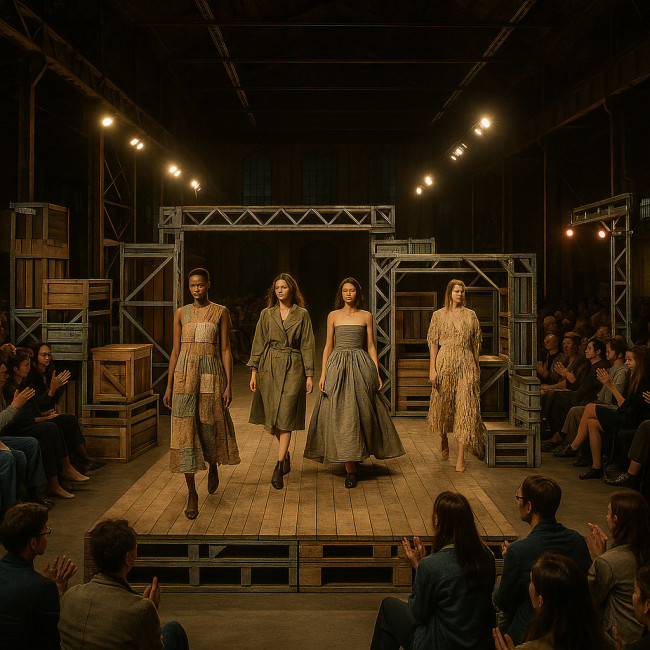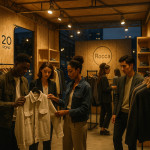Sustainable runway nights: organising eco-friendly fashion events on a budget
Dreaming of a dazzling catwalk that champions the planet without draining your wallet? This guide shows you exactly how to plan, finance and stage sustainable runway nights on a shoestring budget—without sacrificing style or audience impact.
Why a sustainable runway is the new industry benchmark

Runway shows remain a powerful storytelling device for designers. Yet traditional events consume huge amounts of energy, single-use décor and fast-fashion looks. A sustainable runway flips that script: it lowers carbon output, attracts eco-minded sponsors and future-proofs your brand against tightening regulations. Bonus: the cost savings are real, especially when you swap throw-away builds for reusable sets and digital workflows.
Step-by-step timeline for organising a sustainable runway night
90–60 days out: lock your eco-smart venue
- Prioritise venues with existing LED rigs and energy monitoring tools.
- Ask for waste-management policies and seek zero-landfill guarantees.
- Negotiate off-peak rental slots; many sustainably minded spaces offer discounts for week-night events.
60–30 days out: design a circular production concept
Involve set designers early to develop modular backdrops that dismantle into flat packs for future shows. For creative inspiration, browse the online directory of sustainable clothing designers; many offer rental lines that eliminate sample over-production.
30–10 days out: source materials and partners
- Choose certified recycled textiles for drapes and banners.
- Coordinate clothing racks and seating from local prop libraries.
- Secure carbon-neutral couriers for garment transport.
- Invite models who display environmental credentials; tips in this eco-friendly model booking guide.
Final week: streamline low-impact logistics
Switch to e-tickets with scannable codes, offer free bike parking and encourage guests to share rides. Livestream the show to remote shoppers by following advice from hybrid fashion showcase playbooks; you'll widen reach without increasing venue size or energy use.
Sustainable runway tactics that cut costs fast
- LED over halogen: save up to 75 % on energy bills while emitting cooler light ideal for high-resolution cameras.
- Digital lookbooks: share QR codes instead of printed brochures. Designers featured on the Artfolio clothing-designer event hub report 40 % lower marketing spend after the switch.
- Recycled set pieces: partner with local theatre workshops to repurpose flats and risers.
- Community volunteers: offer backstage skills workshops in exchange for event staffing. It builds brand loyalty and slashes labour costs.
- Smart sponsorships: craft value-driven proposals that quantify environmental impact; see this sponsorship deck template for proven talking points.
Cost impact of key sustainable swaps
| Line item | Conventional option | Sustainable alternative | Savings per show |
|---|---|---|---|
| Lighting system | Halogen rig ($600) | LED rental ($420) | $180 |
| Invitations | Printed cards ($250) | E-tickets ($40) | $210 |
| Set décor | Custom builds ($1 200) | Reused flats ($300) | $900 |
| Garment transport | Multiple couriers ($350) | Consolidated electric van ($220) | $130 |
| Bottle water | Single-use plastic ($90) | Water station & compostables ($30) | $60 |
Visualising the energy payoff
Source : U.S. Department of Energy
Marketing and audience engagement with minimal waste

Eco-friendly practices shine when you communicate them. Pre-event, publish behind-the-scenes clips showing set-reuse and energy dashboards. During the show, place table cards with QR links to garment details and designer bios—no glossy booklets needed. Post-event, compile a digital impact report and share it with press using the methods in this media-kit checklist.
Quiz: could your next runway night be greener?
Sustainable runway checklist
Use this rapid-fire list to confirm you've covered every eco box:
- Venue with on-site recycling and LED lighting.
- QR code guest passes and lookbooks.
- Modular, reusable set pieces.
- Consolidated garment shipping via electric vehicles.
- Locally sourced, plant-based catering and refill water stations.
- Backstage compost bins and textile off-cut collection points.
- Livestream option for remote attendees.
- Post-event carbon footprint report shared publicly.
FAQ
- Does going sustainable limit creative freedom?
- No. Modular sets and recycled materials often spark fresh concepts and storytelling angles, not restrictions.
- How do I convince sponsors that a green runway is valuable?
- Present measurable metrics—energy saved, waste diverted, social-media reach—and align them with the sponsor's ESG goals.
- Can I still feature haute couture pieces?
- Absolutely. Many couture houses now offer archival looks for rental, reducing the need for newly produced samples.
- What if my audience expects printed programmes?
- Offer a limited number of on-demand prints made on FSC paper, and display QR codes abundantly for digital explorers.
Take the next step
Ready to turn your concept into a show-stopping, planet-positive reality? Browse the Artfolio directory to source designers, models and set builders who share your eco vision, then start mapping your own sustainable runway night today.











